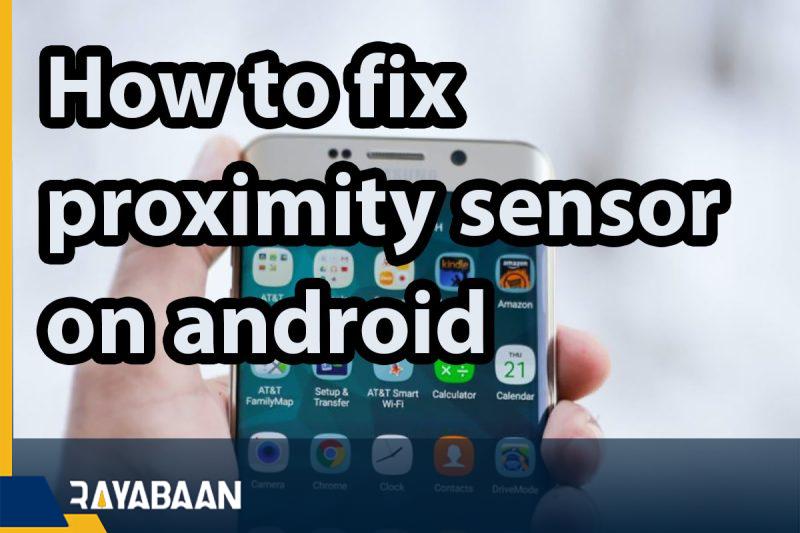How to fix proximity sensor on android 2024
The proximity sensor is considered one of the minor and very small components in smartphones, which plays a vital role. If the proximity sensor fails, many problems may arise for users while making calls.
How to fix proximity sensor on android
Among the problems related to the failure of the proximity sensor, we can mention making unwanted calls when placing the mobile phone in the pocket. It is also possible that the screen will not turn off while talking and the mobile phone is close to the face, and the screen contact with the skin may cause the selection of various options and keys unintentionally.
What is the main function of the proximity sensor?
The proximity sensor plays a role in detecting the distance between the device and the user and creating an appropriate response. For example, when you take your mobile phone out of your pocket or next to your ear and look at its screen, the proximity sensor can issue an order to turn on the screen by detecting the increase in distance.
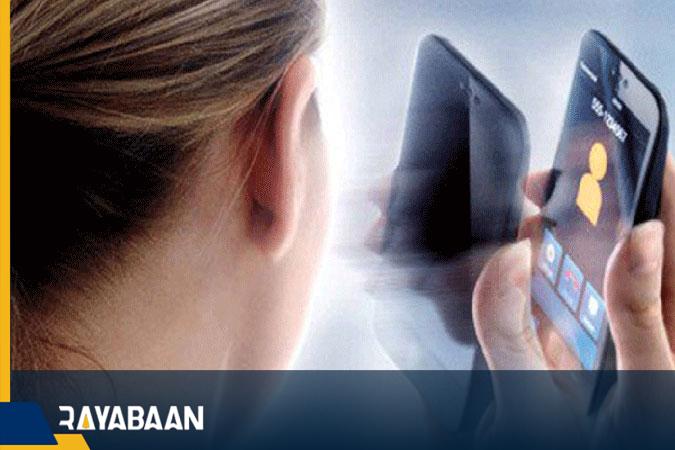
On the other hand, if you put your mobile in your pocket, the proximity sensor prevents unwanted touches. In fact, this part plays an important role in the daily functioning of mobile phones, but few people pay attention to it. Of course, the damage to the said sensor is very noticeable and users will quickly feel the lack of its performance.
How to test the proximity sensor?
If you are not sure if your device’s proximity sensor is working properly, you can make sure it is healthy with a few simple tests. It is recommended to restart your mobile once before starting the following steps to get rid of possible software bugs.
The first method is to place the mobile near the face. Meanwhile, you can make a voice call or listen to voice messages in messenger applications (such as Telegram). If the screen of the device turns off, the sensor is working properly. Also, in another way, put your mobile next to your ear and then call it. If the call is answered unsolicited, the proximity sensor is faulty.
If you don’t get results with the above two methods, you can use the Sensor Test application, which is developed to test the health of various sensors, including proximity, in mobile phones. Finally, if you do not succeed in creating a response from the proximity sensor with any of the mentioned methods, it is better to take the steps mentioned below.
Cleaning the proximity sensor
The dust placed on the front screen of the mobile phone may not seem so problematic; But when they are piled on each other in the long run, they can interfere with the device’s performance. Using a clean cloth or ear cleaner to gently clean the proximity sensor can be a reasonable solution. If you don’t know where the proximity sensor of your device is, clean the entire upper edge because in almost all models we see the presence of the sensor on the top edge of the screen.
After finishing the cleaning process, you can test the device again. Also, make sure there are no cracks or deep scratches on the glass where the sensor is located. If you encounter such a phenomenon, it is better to show your mobile phone to a repairman.
Correct placement of the screen protector
Screen protectors are one of the main reasons for interfering with proximity sensor functionality. If the shield is too thick or not properly positioned, it can cause the sensor to have trouble measuring the distance. If you’ve recently replaced your device’s screen protector and then run into related issues, chances are you’ll need to remove the screen protector again.
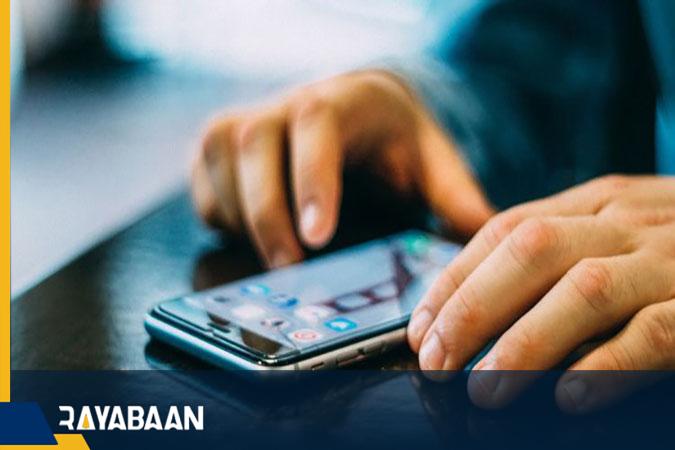
The process of removing the screen protector should be done slowly. Next, clean the remaining glue or other materials with a cloth. Make sure that when cleaning, it is better to move the napkin or cloth from the top of the screen to the bottom to avoid the accumulation of material on the sensors placed on the edge and the lens of the selfie camera.
Now test the sensor function again. When buying accessories, including screen protectors, it is recommended to buy products for your mobile phone and measure the effect on the performance of the device before using them permanently.
Mobile software update
Some bugs can interfere with the operation of various parts of the device, including the proximity sensor. Sometimes such problems occur temporarily; But in some cases, due to the incompatibility of the software with the hardware, they will need to receive an update. Smartphone manufacturers try to fix such problems by releasing continuous updates, so it is better to update your device to the latest official version released by the manufacturer.
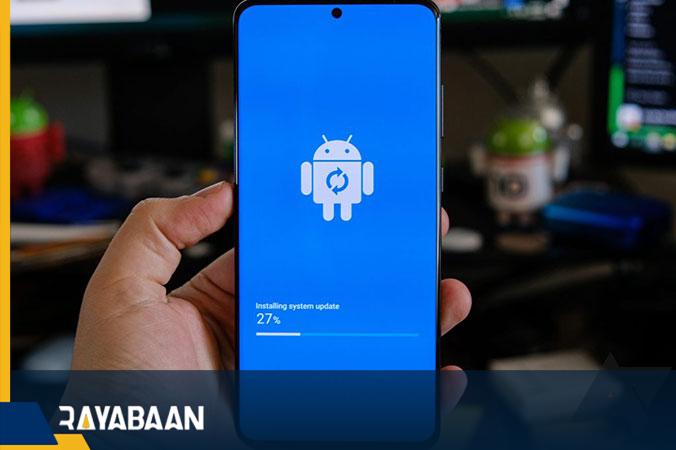
To find out about the release of the update for your mobile phone in the Android operating system, first go to the “Settings” section and then by referring to the “System” section, select the “Advanced” option and finally touch “System Update“. If a new update has been released for the device, it will be visible in the mentioned menu.
Calibrate the proximity sensor
Re-calibrating the sensors used in the mobile, including proximity, can help fix bugs and restore their proper functionality. The calibration process is very important because it ensures that the sensor is reading the information correctly. One of the famous examples of sensor calibration is in the Google Maps application, which is used for better and faster location detection. Many applications have been published to calibrate sensors, one of the free and popular titles is mentioned below.
Proximity Sensor Reset/Fix (+Overrider service)
Reset the device
If none of the things mentioned in the previous sections worked, you can try to reset your mobile phone before going to the repair shop. This will erase all data on the device, including personal information. On the other hand, it is possible that by returning the phone to its original state, some bugs will disappear and the proximity sensor may work properly again.
Warning!
Be sure to back up your sensitive and essential information or synchronize all your data with your Google account before resetting your mobile phone. If synchronization is disabled, it will be almost impossible to restore data after a reset.
Refer to the repairman
If you don’t get results from any of the mentioned methods, there is a possibility of permanent damage to the proximity sensor, and it is better to contact an expert in this field to repair it. If your device has hit the ground in recent days, it is likely that it has been seriously damaged. The proximity sensor is a very sensitive part that malfunctions with slight pressure or impact.
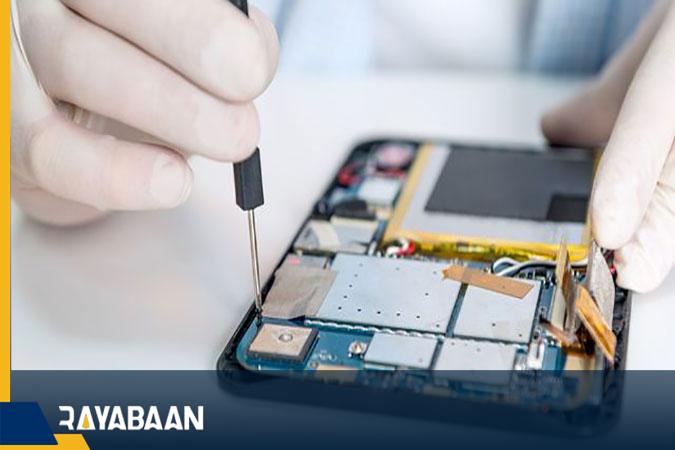
It is recommended to take your mobile phone to the official repair shop or service centers of the manufacturer. You may be tempted by some tutorial videos on YouTube, But note that repairing smartphones is not so easy due to the smallness of the components and requires special tools and skills. Doing so may end up causing more damage.
If you don’t use your phone much for calls, you can probably continue using it without the proximity sensor. Of course, you need to change the settings of your device. For example, set the screen off time to the lowest possible value so that if the device is placed in the pocket, a short time is needed to turn off the screen.
Frequently asked questions about How to fix proximity sensor on android
- What is a proximity sensor on an Android device?
A proximity sensor is a sensor that detects the presence of nearby objects without physical contact. It is commonly used in smartphones to detect when the device is held up to the ear during a phone call, allowing the screen to turn off to prevent accidental touch input.
- Why is my proximity sensor not working on my Android device?
There could be several reasons why your proximity sensor is not working, including a software glitch, a physical obstruction, or a faulty sensor.
- How can I test if my proximity sensor is working?
You can test your proximity sensor by dialing #0# on your phone and selecting the “Sensor” option. This will bring up a screen that displays various sensor readings, including the proximity sensor.
- How do I calibrate my proximity sensor on my Android device?
You can calibrate your proximity sensor by clearing the cache of the proximity sensor app or by recalibrating the sensor through your device’s settings menu.
- How do I clear the cache of the proximity sensor app?
To clear the cache of the proximity sensor app, go to your device’s settings menu, select “Apps,” find the proximity sensor app, and select “Clear cache.”
- How do I recalibrate the proximity sensor on my Android device?
To recalibrate the proximity sensor on your Android device, go to your device’s settings menu, select “Display,” and then select “Proximity sensor calibration.” Follow the instructions on the screen to recalibrate the sensor.
- What if clearing the cache or recalibrating the proximity sensor doesn’t work?
If clearing the cache or recalibrating the proximity sensor doesn’t work, you may need to restart your device or perform a factory reset.
- Can I fix a faulty proximity sensor on my own?
If the proximity sensor is physically damaged, it may need to be replaced by a professional technician. However, if it’s a software issue, you may be able to fix it yourself by clearing the cache or recalibrating the sensor.
In this article, we talked about “How to fix proximity sensor on android” and we are waiting for your experiences to use these methods. Please share your thoughts with us.

